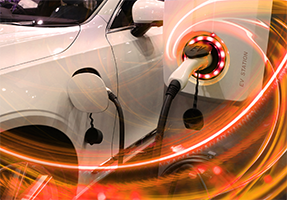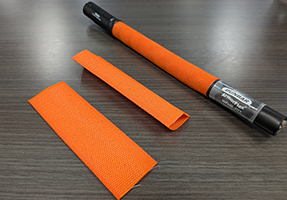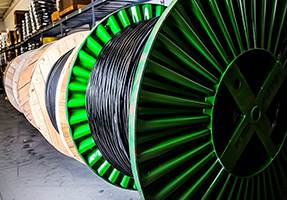Wiring for EV Infrastructure: What You Need to Know
- Kassie Teagarden
- Wire & Cable
- Sep 18, 2024
- 3254views

Wiring for EV Infrastructure: What You Need to Know
The automotive industry is undergoing a significant transformation with the rapid rise of electric vehicles (EVs). As more consumers and companies shift toward cleaner transportation options, the demand for efficient and high-performing components has increased—especially for wiring and cable systems that support these vehicles.
The shift to EVs has led to significant developments in the types of components used in automotive design, particularly when it comes to wiring and cables. The wiring system in an electric vehicle plays a crucial role in everything from power distribution to safety. Whether you’re a manufacturer, supplier, or EV owner, understanding the ins and outs of EV wiring can help ensure performance, longevity, and safety.
Let’s explore the key aspects of wiring in electric vehicles, from the types of cables used to critical considerations for ensuring optimal performance.
The Role of Wiring in Electric Vehicles
In a traditional internal combustion engine (ICE) vehicle, wires and cables are primarily used for distributing electrical power to various systems like lighting, infotainment, and power accessories. However, in an electric vehicle, the wiring system serves a much more crucial function—it’s responsible for distributing the high-voltage electricity from the battery to the electric motor, as well as to auxiliary systems like the climate control and regenerative braking systems.
In addition to managing higher power loads, EV wiring must handle increased complexity as these vehicles often come equipped with advanced electronics, sensors, and communication systems that work together to ensure smooth, efficient, and safe operation.
Key Wiring Components in an Electric Vehicle
An electric vehicle’s wiring system comprises several essential components that work in unison to power the vehicle, manage data, and ensure the overall safety of the car. The following are some of the most critical wiring components in an EV:
1. High-Voltage Cables
High-voltage cables are the backbone of an electric vehicle. These cables are responsible for transferring electricity from the battery to the electric motor and various systems throughout the car. Given the significant amount of energy being transported, these cables must be designed to withstand high temperatures, resist wear and tear, and maintain reliability over time.
The primary challenge with high-voltage cables is ensuring they remain safe even in extreme conditions, such as during accidents or under intense load. For this reason, these cables are often designed with high-quality insulation, shielding, and are subject to strict safety standards and certifications.
Key Considerations for High-Voltage Cables:
- Voltage Rating: High-voltage cables in EVs are typically rated between 300V and 1000V, depending on the power requirements of the vehicle.
- Temperature Resistance: These cables need to withstand extreme temperatures, as they can get very hot due to high current flows. Many high-voltage cables are rated for temperatures between -40°F (-40°C) and 302°F (150°C) or higher.
- Insulation: Insulation materials like cross-linked polyethylene (XLPE), thermoplastic elastomers (TPE), and silicone rubber are commonly used to ensure the safety and durability of high-voltage cables. These materials provide high resistance to heat, moisture, chemicals, and abrasion.
- Shielding: High-voltage cables in EVs must be shielded to prevent electromagnetic interference (EMI) that could affect the vehicle’s electronic systems or the performance of nearby devices.
Common Uses of High-Voltage Cables in EVs:
- Battery to Motor: Transfers electricity from the vehicle’s battery to the electric motor, which powers the car.
- Battery Charging: Used in the charging circuit to transfer electricity between the charging port and the battery.
- Inverter Connections: High-voltage cables connect the battery to the inverter, which converts DC power from the battery into AC power for the motor.
2. Low-Voltage Wiring
Even though electric vehicles are powered by high-voltage batteries, low-voltage wiring is still required for essential systems such as lighting, infotainment, and basic vehicle controls. These low-voltage systems typically operate at 12V or 48V and are separate from the high-voltage system that powers the drivetrain.
Just like in conventional vehicles, low-voltage wiring needs to be lightweight and flexible, making it easier to route through tight spaces. Given that EVs are typically lighter than their ICE counterparts, manufacturers are increasingly turning to lightweight materials for wiring to optimize efficiency and range.
Low-voltage cables also play a critical role in electric vehicle (EV) charging stations, facilitating essential communication, control, and safety functions during the charging process. While high-voltage cables transfer electricity from the charging station to the vehicle, low-voltage wiring handles the interaction between the station and the EV, ensuring safe and efficient charging.
Key Considerations for Low-Voltage Cables:
- Voltage Rating: Typically rated for 12V or 24V systems in electric vehicles, although some may go up to 48V depending on the system.
- Lightweight and Flexibility: Weight is a critical factor in EV efficiency, so low-voltage wiring is often made from materials like aluminum, which is lighter than copper. Additionally, the cables need to be flexible to fit into tight spaces within the vehicle.
- Temperature Resistance: Although low-voltage cables do not carry as much power as high-voltage ones, they still need to resist temperature extremes, especially in the engine bay or near high-power systems.
Common Uses of Low-Voltage Cables in EVs:
- Lighting Systems: Powers headlights, taillights, and interior lighting.
- Infotainment and Communication: Connects the vehicle's audio, navigation, and communication systems.
- Sensor Systems: Transmits data from various sensors (e.g., speed, temperature, and pressure) to the vehicle's control units.
Types of Cables Used in EV Charging Stations
Electric vehicle charging stations require robust wiring to handle the high current and voltage necessary to charge EVs efficiently. Depending on the type of charging station (Level 1, Level 2, or DC fast charging), the wire and cable specifications will vary.
1. Level 1 Charging (120V AC)
Level 1 charging stations are typically used for home charging and are the slowest type of charging available. They use standard household outlets (120V AC) and require minimal specialized wiring.
- Wire Type: Standard THHN or THWN wire (Thermoplastic High Heat-resistant Nylon-coated) can be used for Level 1 charging stations.
- Wire Gauge: Typically requires 12 AWG or 10 AWG wire for a standard 20A or 30A circuit.
- Insulation: Level 1 chargers don’t generate significant heat or carry high current, so standard PVC or nylon insulation is sufficient.
2. Level 2 Charging (240V AC)
Level 2 charging stations are the most common for both residential and commercial use. They operate at 240V AC and can charge an electric vehicle in a fraction of the time required by a Level 1 charger.
- Wire Type: THHN/THWN, XHHW-2, or UF-B (Underground Feeder) cables are commonly used for Level 2 chargers.
- Wire Gauge: Wire gauge is typically 8 AWG or 6 AWG, depending on the amperage of the circuit (usually 40A or 50A).
- Temperature and Heat Resistance: Since Level 2 charging can generate more heat, the cables used must be rated for higher temperatures, typically between 75°C and 90°C.
3. DC Fast Charging (400V to 900V DC)
DC fast chargers (also known as Level 3) are the most powerful and are typically found in commercial or public charging stations. These systems bypass the vehicle's onboard charger and deliver DC power directly to the battery, allowing for much faster charging.
- Wire Type: RHW-2, XHHW-2, or USE-2 wires are typically used for DC fast charging stations. These wires are designed for high-temperature and high-voltage applications.
- Wire Gauge: The wire gauge used for DC fast charging varies, but 4 AWG to 2/0 AWG is commonly used depending on the power requirements (typically 100A or higher).
- Insulation: Insulation materials like cross-linked polyethylene (XLPE) or ethylene propylene rubber (EPR) are used for their excellent thermal and electrical properties, providing durability under high voltage and temperature conditions.
- Shielding: Proper shielding is crucial in DC fast chargers to protect against EMI, which can interfere with both the vehicle’s systems and nearby electronics.
Biggest Challenges in EV Wiring
Wiring for electric vehicles is far more complex than for traditional gas-powered cars. Here are some of the most common challenges manufacturers and engineers face:
Heat Dissipation
Electric vehicles generate a significant amount of heat, especially in the high-voltage components. Proper thermal management is essential to prevent overheating and potential damage to the wiring system. The cables used in EVs must be designed to withstand extreme temperatures without compromising their performance or safety. In some cases, manufacturers use liquid-cooled cables to help dissipate heat during fast charging or under heavy load conditions.
Weight Considerations
As the range of an EV is directly tied to its weight, minimizing the mass of wiring is crucial for efficiency. Aluminum has emerged as a popular choice for EV wiring because it is lighter than copper. However, aluminum presents its own set of challenges, such as increased susceptibility to corrosion. Manufacturers are continually innovating to find the right balance between weight, durability, and conductivity.
Electromagnetic Interference (EMI)
With so many electronic components operating simultaneously in an EV, electromagnetic interference (EMI) can become a serious issue. EMI can cause malfunctions (e.g. jamming sensors, knocking out signals, or damaging equipment) in communication systems, sensor networks, and other critical systems.
Since EMI can be responsible for all kinds of common equipment malfunctions, device designers and builders incorporate electromagnetic compatibility (EMC) features to mitigate EMI in their products. Shielding the wires and cables from EMI is necessary to ensure the vehicle's electronic systems continue to operate smoothly.
Read our blog post to learn more: No Chance for Interference Currents: LAPP as an EMC Technology Partner
Flexibility and Durability
Wiring systems in EVs must be flexible enough to route through tight spaces while also being durable enough to resist the vibrations and shocks that occur during driving. This is particularly important for high-voltage cables, which must remain insulated and secure even in the event of an accident.
Wiring Standards and Certifications
To ensure safety and reliability, EV wiring must adhere to a variety of standards and certifications. Common standards include:
- ISO 6722: International standard for road vehicle electrical wiring, covering both high- and low-voltage cables.
- UL 62: Standard for flexible cords and cables.
- UL 758: Standard for appliance wiring material, often applied to the wiring used within electric vehicle charging systems.
- UL 2263: Standard that sets requirements for electric vehicle (EV) cables, including those with ratings up to 1000V AC and DC.
- IEC 60502: Covers cables for power distribution with a rated voltage of 1kV and above, often relevant for high-voltage wiring in EVs.
- SAE J1654: This standard applies to high-voltage wiring in electric and hybrid vehicles.
- NEC Article 625: Covers electrical requirements for EV charging systems.
Compliance with these standards ensures that the cables used in EVs are resistant to factors like extreme temperatures, chemicals, and mechanical stress.
Wiring is a critical component of electric vehicles, playing a key role in power distribution, safety, and the overall performance of the car. From high-voltage cables that deliver power from the battery to low-voltage systems that manage everything from lighting to infotainment, EV wiring systems are designed to handle complex demands. As technology advances and electric vehicles become more commonplace, innovations in wiring materials and designs will help make EVs even more efficient, durable, and safe.
For anyone involved in the electric vehicle industry, whether as a manufacturer, supplier, or consumer, understanding the role of wiring systems is essential to ensuring the ongoing success of EV technology.











